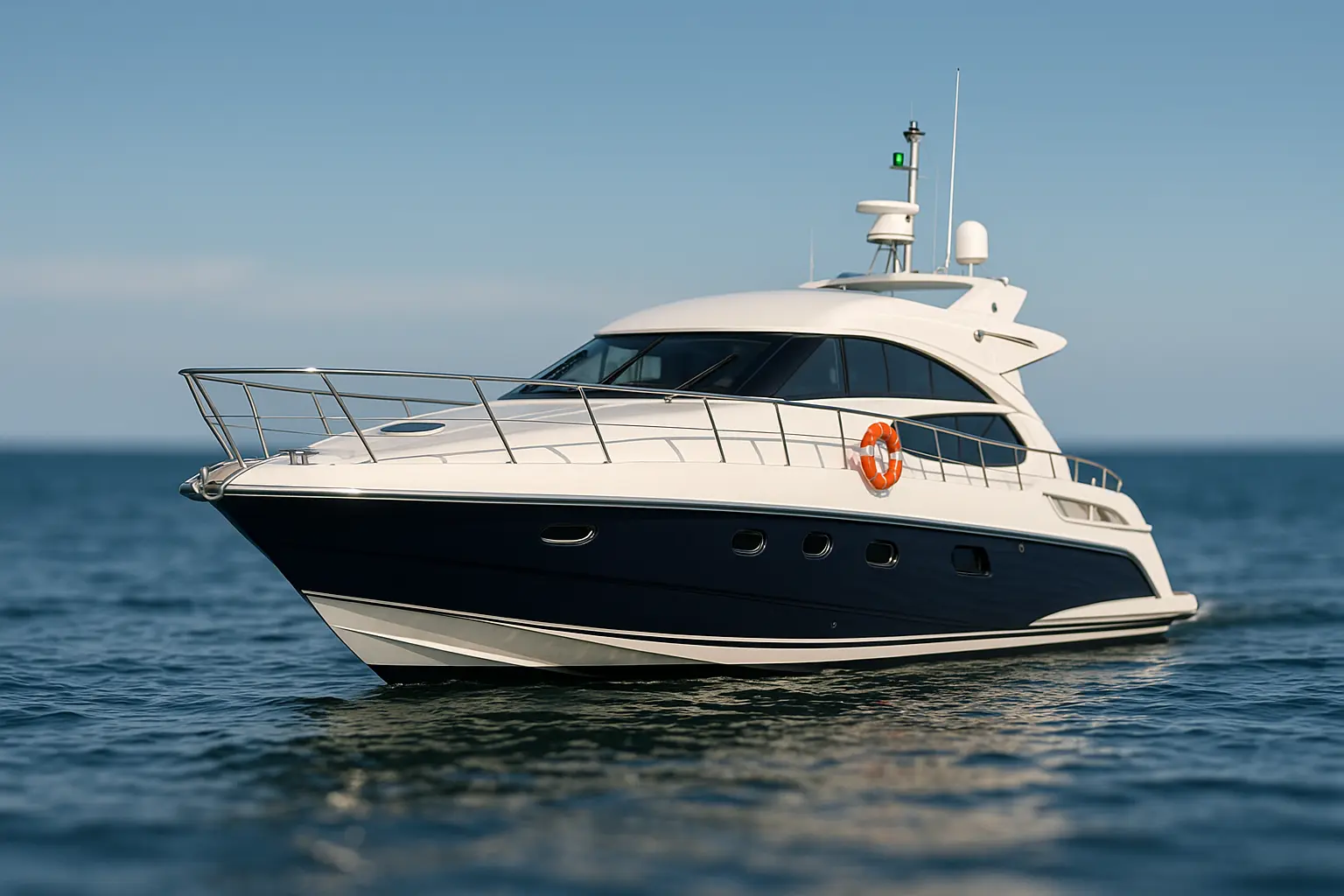As we navigate through the vast expanse of the maritime industry, there lies an intricate balance between innovation and regulation. The world has witnessed an unrelenting growth in the design and construction of superyachts and vessels, driven by advanced engineering and opulent aesthetics. Yet, the silent orchestrator of this evolution remains the international regulatory framework. This article unveils the profound impact of maritime regulations on modern yacht design, exploring how these guidelines shape the future of the marine world, all while keeping an eye on safety and environmental sustainability.
The Confluence of Design and Regulation
Imagine embarking on a journey where craftsmanship and legislation sail hand in hand. At the heart of yacht design lies a pivotal relationship with maritime regulations. These rules, often established by the International Maritime Organization (IMO), are not mere bureaucratic mandates, but crucial guidelines ensuring safety and environmental preservation.
Superyachts, revered for their grandeur and luxury, are no exception. As we witness the burgeoning demand for unique and extravagant marine travels, it’s pivotal to understand how regulatory bodies influence their design. They necessitate that each vessel not only adheres to the aesthetic dreams of its owner but also complies with SOLAS (Safety of Life at Sea) conventions and other international mandates.
These regulations dictate several aspects of yacht construction, from the materials used to the technology integrated within. Designers are challenged to innovate, ensuring each ship is both a marvel of modern engineering and a paragon of safety. This symbiotic relationship fosters creativity within constraints, resulting in sustainable, state-of-the-art vessels.
By adhering to these guidelines, the industry assures that each superyacht not only stands as a testament to luxury but also champions environmental stewardship and safety. As we sail forward, this blend of artistry and responsibility may redefine how future generations engage with the waters.
Safety: The Unseen Backbone of Maritime Marvels
In the world of maritime travel, safety stands as an unseen yet indispensable pillar. Maritime regulations have evolved over decades, bringing forth stringent safety measures that touch every aspect of yacht operations. From the sturdy construction of the hull to the advanced fire suppression systems, these measures are designed to protect both lives and the marine environment.
The SOLAS Convention, a key regulatory framework, emphasizes critical safety elements such as life-saving appliances, fire protection, and navigational systems. These standards are not just applicable to commercial ships but extend their reach to superyachts and other luxury vessels.
Modern designers must work with these standards in mind, ensuring that their creations are equipped with cutting-edge technology. This includes state-of-the-art navigation systems, emergency protocols, and suppressant mechanisms that go beyond the basics. The challenge lies in integrating these systems seamlessly into the luxurious ambiance expected of a superyacht.
Moreover, safety regulations often necessitate frequent inspections and maintenance procedures, ensuring that every journey undertaken is as secure as possible. These measures, while stringent, ultimately enhance the yacht experience, providing peace of mind to owners and passengers alike.
Ultimately, safety is not just a regulatory requirement but a promise to the seafaring communities that every voyage will be a protected and pleasurable endeavor. By understanding and complying with these regulations, yacht designers ensure that their masterpieces sail smoothly, even amidst the unpredictable nature of the sea.
Environmental Stewardship: Navigating Toward Sustainable Seas
As we dive deeper into the blue, the call for environmental responsibility echoes louder than ever. The yacht industry, with its fleet of grand vessels, bears a significant responsibility toward our planet’s health. At the forefront of this mission is a slew of international regulations designed to mitigate the ecological footprint of maritime activities.
The IMO plays a crucial role in initiating these environmental standards, urging the adoption of cleaner technologies and sustainable practices. These guidelines influence yacht design in numerous ways, from the choice of fuel to waste management systems. Designers and shipbuilders are now tasked with creating ships that harmonize luxury with environmental consciousness.
One significant initiative is the push towards the use of green technologies, such as hybrid propulsion systems and solar panels, which significantly reduce carbon emissions. Additionally, regulations call for advanced systems for reducing waste discharge and employing ballast water management practices that protect aquatic ecosystems.
The yacht industry has responded with innovative solutions. Superyachts today are increasingly equipped with eco-friendly technologies that not only comply with regulatory standards but also set new benchmarks for sustainability. This forward-thinking approach ensures that each vessel not only delights its occupants but also respects the oceans it traverses.
As the maritime world sails toward a greener horizon, the integration of environmental regulations within yacht design stands as a testament to the industry’s commitment to safeguarding the seas for future generations. It’s a journey where luxury meets sustainability, crafting a future where both can seamlessly coexist.
Governmental Influence and the State of Regulation
In the intricate realm of maritime regulations, governmental influence looms large, guiding the design and operation of superyachts and vessels. National and international regulatory bodies maintain a vigilant eye on the industry’s adherence to safety and environmental standards, ensuring consistency and compliance across the board.
State-level regulations often complement international standards, with local maritime authorities playing a crucial role in overseeing and enforcing compliance. These bodies monitor everything from the technical construction of the yacht to its operational protocols, ensuring each vessel meets specific criteria.
For yacht designers, understanding these state-specific requirements becomes essential. While international mandates provide a broad framework, local regulations might necessitate additional considerations, such as specific safety equipment or emissions standards.
Furthermore, state influence extends to port regulations and customs procedures, impacting how yachts are registered, inspected, and permitted to operate within certain waters. These regulations can vary significantly between regions, presenting unique challenges for a globally-minded industry.
Despite these complexities, the industry’s commitment to regulatory compliance ensures that superyachts continue to represent the pinnacle of luxury and safety. By working hand-in-hand with governmental bodies, the maritime world stands poised to meet the challenges of an ever-evolving landscape, where compliance is not just a legal obligation but a commitment to excellence.
Through this collaboration, the marine industry continues to forge ahead, setting sails toward a future where regulation and innovation coexist, ensuring every vessel navigates the waters with precision and grace.
As we anchor this exploration into the realm of maritime regulations, it’s evident that these guidelines are more than just rules etched in legislative documents. They are the very compass that guides the industry toward a future where safety, sustainability, and luxury coexist seamlessly.
In the grand scheme of yacht design, regulations serve as the foundational blueprint, shaping every facet of a superyacht‘s journey. From ensuring the safety of all aboard to safeguarding our seas, these mandates are indispensable, setting standards that elevate the industry.
The future of yacht design will inevitably be molded by these regulatory frameworks, with designers and builders rising to the challenge. This confluence of creativity and compliance ensures that the next generation of vessels will not only dazzle with their beauty but also lead in environmental stewardship and safety.
As we sail forward, let us embrace these regulations as partners in progress. For in doing so, we chart a course for the marine industry that promises innovation, integrity, and an unwavering commitment to excellence on the open sea. 🌊
FAQ
How do maritime regulations influence the design of yachts?
Maritime regulations set specific standards for safety, environmental protection, and operational efficiency, which yacht designers must adhere to. These rules impact everything from hull design, onboard systems, materials used, and even the yacht’s dimensions, ensuring compliance with international safety and environmental standards.
What are some common regulations that affect yacht design?
Some prevalent regulations include those set by the International Maritime Organization (IMO), such as the International Convention for the Safety of Life at Sea (SOLAS) and the International Convention for the Prevention of Pollution from Ships (MARPOL). These regulations govern aspects like life-saving appliances, fire safety systems, waste management, and emissions control.
How do environmental regulations shape modern yacht construction?
Environmental regulations, such as those aimed at reducing emissions and preventing ocean pollution, lead to advancements in eco-friendly technologies. This includes the integration of cleaner propulsion systems, alternative fuels, waste treatment facilities, and the use of sustainable materials in yacht construction.
Do regulations affect the aesthetics of yacht design?
While safety and environmental regulations primarily focus on functional and operational aspects, designers often find innovative ways to incorporate these requirements without compromising aesthetics. The challenge lies in harmonizing regulatory compliance with the luxury and elegance expected in yacht design.
How are designers adapting to evolving maritime regulations?
Yacht designers stay informed about regulatory changes through continuous education, collaboration with regulatory bodies, and participation in industry forums. They also utilize advanced design software and technology to simulate and test compliance, ensuring that new yachts meet both current and anticipated future regulations.


